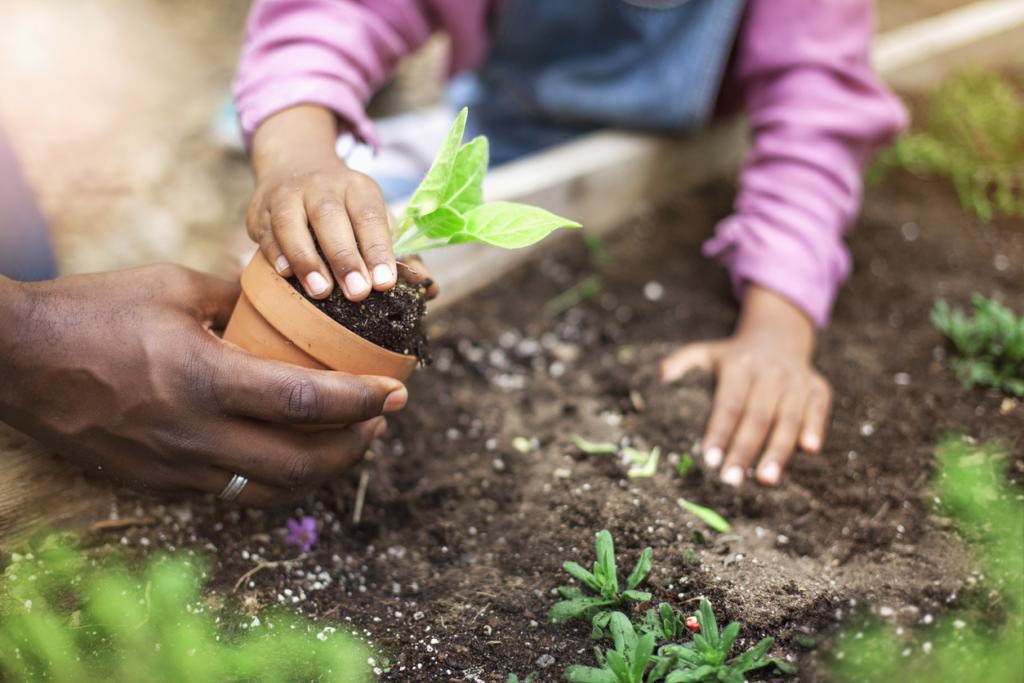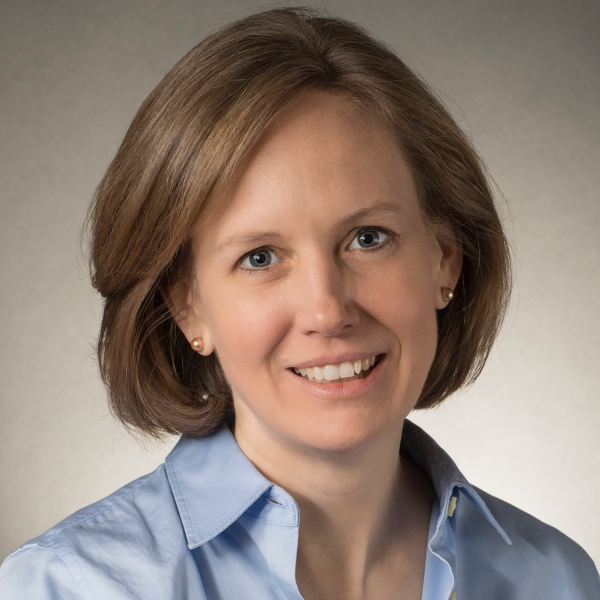I love imagining an education system where the design of community hubs, green spaces, housing programs, social and mental-health services, and sustainability initiatives don’t happen without harnessing young people’s ideas and active involvement.
Kelly Young, President, Education Reimagined
In March 2019, I met a group of learner-centered leaders from Minnesota, South Dakota, North Dakota, and the 23 Native Nations in that region at a convening hosted by the Bush Foundation.
At the event, we heard from Dr. Teresa Peterson, a 2011 Bush Leadership Fellow and champion for cultivating Indigenous education. She shared the importance of young people not only finding their gifts and purpose but also contributing those gifts and purpose to the community. While listening to Dr. Peterson, I was struck by how Western culture predominately thinks about the individual as distinct from the community and how wonderful it was to imagine a transformed society that no longer separates the two.
It’s not that I, the Education Reimagined team, or our learner-centered communities don’t understand the importance of community. Core to our beliefs is that learners are critical to the well-being of their communities and vice versa. But, so often in education conversations—whether they are school-centered or learner-centered—we focus on the performance of an individual when we think about outcomes. This means in the context of young learner success, contribution to our communities is often seen as a secondary benefit, not a primary one.
In the dominant education paradigm, we too often focus on deficiencies, rather than strengths, of individuals and communities. In learner-centered work, we seek to reverse this focus. But, again, too often when it comes to assessing outcomes, we remain fixated on the individual, rather than the community. If this fixation remains, we run the risk of guiding young people along learning journeys where the only success they acknowledge by the time they graduate is “look what I did,” rather than “look at the impact I had on my community and my community had on me.”
Building community…improves the health of everyone. If we hope to make education better, there are answers rooted in the power of relatedness out there.
Joe Rice, Executive Director, Nawayee Center School
Leaders like Dr. Peterson provide a welcoming invitation to break this fixation and expand our definition of success—making inseparable the success of the individual and the success of the community they live in. The best part is we don’t have to “solve” this problem as if a solution has never existed. We have leaders and communities who have been powerfully living inside this “individual-community” mutually reinforcing framework for decades, centuries, and even millennia.
Just before the pandemic hit the U.S. last March, Joe Rice (Choctaw) spoke about the “huge benefits [we get] from building community because it ultimately improves the health of everyone. If we hope to make education better, there are answers rooted in the power of relatedness out there.”
Ten months later, in November 2020, despite the entirely new world he was standing in, Joe remained grounded in the importance of community—a value held by his ancestors for over 100,000 years. He reminded us again of what’s possible when we empower young people to “take on the responsibility of finding solutions to problems in our community,” despite the physical distance the pandemic forced on us.
In September 2020, Joe Hobot (Hunkpapa), Timothy Jones, and Josh Schacter joined me for a powerful conversation about community as it relates to their work in Indigenous, Black, and Brown communities. Joe Hobot, President and CEO of American Indian OIC, spoke about reconnecting Indigenous youth to their lost heritage and cultural traditions (including their oneness with the natural world). And, how it enabled young learners to embrace “a different approach and opinion about their place in the world, their place as American Indian people within this country, and their roles and responsibilities to support their community along the way.”
Timothy Jones, Chief Visionary Officer of #HipHopEd, revealed how a youth-driven documentary project—14th Street Freestyle: 68 2 98—empowered learners of color to explore a snapshot of Washington D.C.’s past through the eyes of local elders (including their own grandparents), and come to see themselves as stewards, interpreters, and keepers of important historical knowledge.
And, Josh Schachter, Director and Founder of CommunityShare, shared an eye-opening story about how refugee and immigrant youth in Tucson, AZ interpreted “home” in the United States as “isolated and disconnected.” With this information, Josh drew the connection from his work in biological ecosystems to “thinking [about learning] as an ecosystem” and how “ecosystems are about living relationships and looking at how you see the potential in relationships that exist or the ones that aren’t equally accessible in an ecosystem.”
Young people possess the heart, drive, and unique gifts needed to solve complex problems at an individual and community level.
Kelly Young, President, Education Reimagined
Also in September 2020, Connie Liu wrote about Project Invent’s mission to unleash the ingenuity of young people to transform their communities. Connie shared how a passionate team of young learners invented a gaming headset to support a classmate whose mobility is limited by his cerebral palsy.
Their work was not only life-changing for their classmate, but also garnered an invitation to present to Microsoft’s XBOX Controller Team. Connie left us with an important conclusion: “Students are uniquely positioned to use invention as a public platform to illuminate the problems they see and the ways those problems are overlooked in their communities.”
These are only a few (of the countless) examples that illuminate why centering the interconnectedness of individuals and communities is vital and transformative.
By listening to these leaders (and others who stretch beyond the conventional walls of the education field), we can now reflect on questions like: What if we thought about community contribution and connectedness as one of the outcomes of learner-centered education? What if we saw more young people engaging with local organizations, leaders, elders, and businesses as a natural part of education? And, what if we also saw community stakeholders showing up to invest time, talent, and ideas to cultivate learners’ growth?
If all this were happening, would we see more communities flourishing and witness more life-changing moments with our youth?
We need now, more than ever, people and communities that can heal, care for one another, and unlock the gifts we each have that will make the world (our largest community) a better place.
Kelly Young, President, Education Reimagined
I love imagining an education system where the success of the individual and the success of the community are intertwined. I love imagining an education system where young people’s learning is always relevant to how they see the world and the impact they want to make on it.
And, I love imagining an education system where the design of community hubs, green spaces, housing programs, social and mental-health services, and sustainability initiatives don’t happen without harnessing young people’s ideas and active involvement. As Connie Liu’s stories of impact showcased, young people possess the heart, drive, and unique gifts needed to solve complex problems at an individual and community level—inspiring others along the way.
We have been living inside one of the most chaotic and exhausting 10-month period any generation alive today has been through. And through it all, the feel good stories have always had the same thing in common—neighbors helping and supporting neighbors. Whether it’s drive-by birthday caravans, young people writing letters to their elders in nursing homes, or live-streamed Zoom symphonies and concerts, in times of difficulty, we lean on each other and our boundless creativity.
Dr. Peterson has a quote from Pablo Picasso at the bottom of her emails that sums up this view: “The meaning of life is to find your gift. The purpose of life is to give it away.” We need to inspire young people to discover their unique gifts by following their unique interests, and to feel safe to share their unique gifts with the world and in the service of others and their community, in their own way.
We need now, more than ever, people and communities that can heal, care for one another, and unlock the gifts we each have that will make the world (our largest community) a better place. Education could be the instrument for unlocking those gifts.
As we continue our journey toward a learner-centered future, let’s be present to the gifts that our Native Nations bring and our country’s diverse cultural heritage offers. By listening to these voices, insights, and stories of transformation, we might just discover that what we are most longing for is right in front of us.

